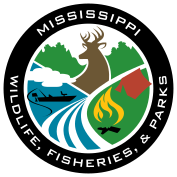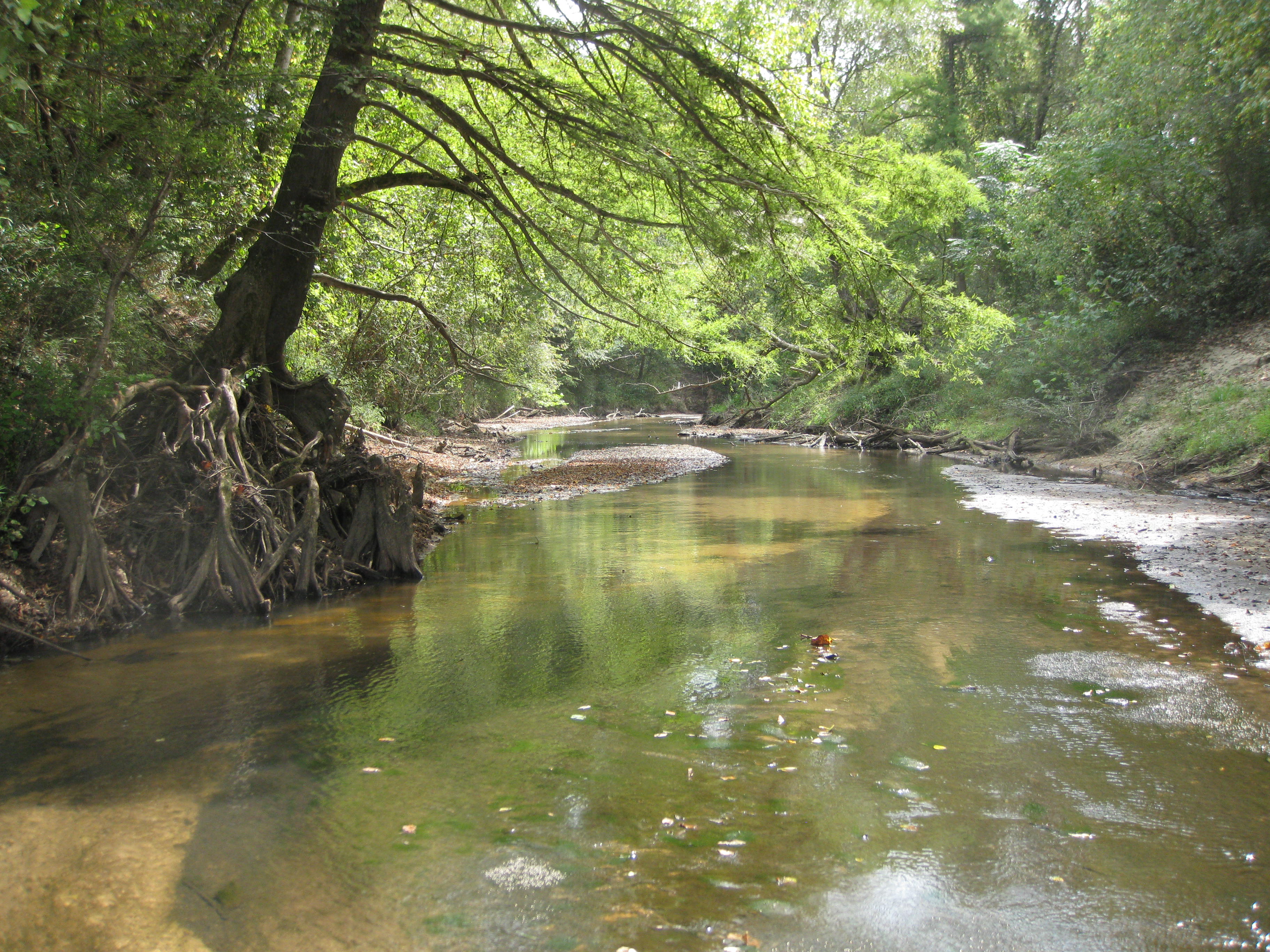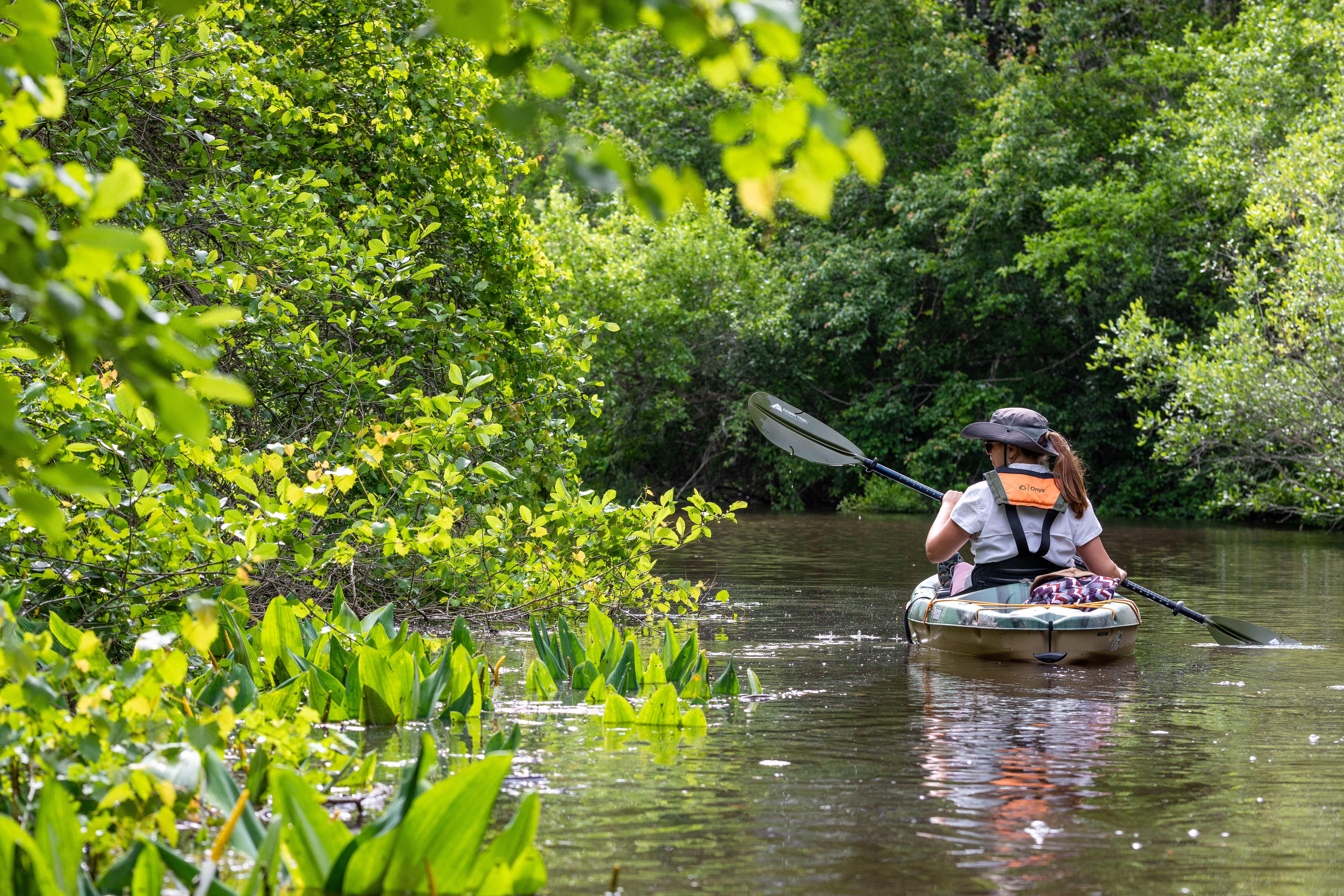
About the Scenic Streams Program
 As we enter a new century, the landscape of Mississippi will change. People will continue to move out of cities into rural areas with road building projects expanding to connect communities and accommodate this development. The agriculture and forestry industries will continue to provide food, building materials and paper and pulp products for our society. People and industry will make expanding demands on water resources for services such as sewage treatment, surface drainage, and water for industrial processes.
As we enter a new century, the landscape of Mississippi will change. People will continue to move out of cities into rural areas with road building projects expanding to connect communities and accommodate this development. The agriculture and forestry industries will continue to provide food, building materials and paper and pulp products for our society. People and industry will make expanding demands on water resources for services such as sewage treatment, surface drainage, and water for industrial processes.
Our rivers and streams will flow through this increasingly populated and complex landscape. When you consider the multiple uses that we presently demand of our rivers and streams, increased demands in the future are a cause for concern. Streams accommodate our various human activities, but at the same time they support a rich variety of fish, aquatic animals, and plants. Streams, their flood plains, and hardwood bottom-lands provide essential wildlife habitat for deer, turkeys, rabbits, squirrels, most of our migratory and native songbirds, and countless other varieties of wildlife.
People have long felt a strong connection to streams and rivers. They run through our history, our literature and our personal experiences. Whether it is the scenery, the sounds, the cool water on a summer day, the pull of a fish in the current, or the gliding of a canoe, streams and rivers provide us with diverse pleasures. Their value to us is not easily measured, but it is great. To maintain this value, streams need the consideration and help of landowners and others.
The Role of Landowners
 In the Act that creates the Scenic Streams Stewardship Program, the drafters wrote that there is a necessity for a "rational balance between the use of these streams and the conservation of the natural beauty along these streams". Conservation is possible through the concern and effort of landowners of property adjoining rivers and streams.
In the Act that creates the Scenic Streams Stewardship Program, the drafters wrote that there is a necessity for a "rational balance between the use of these streams and the conservation of the natural beauty along these streams". Conservation is possible through the concern and effort of landowners of property adjoining rivers and streams.
Landowners along streams need to make their land produce income for them just like landowners without streams. Their financial obligations begin with annual taxes to the county, and involve mortgages and loan payments. Stream-side landowners are different from other landowners because their activities along the stream can directly affect it for better or worse.
For these select few people, there is tremendous opportunity to be good stewards of the water, land, and wildlife along the stream. Stewardship is defined by Webster's as "the careful responsible management of something entrusted to one". A steward is a conservator.
The Scenic Streams Stewardship Program asks that landowners consider voluntarily using Best Management Practices (BMPs) along streams and leaving a buffer zone of trees and vegetation along the banks. A stream buffer zone or Streamside Management Zone (SMZ) of an appropriate size and width will keep erosion to a minimum, and will keep stream banks stable. The width of the buffer zone is left strictly up to the landowner. Soil specialists or foresters can recommend appropriate widths based on slope, and soil characteristics.
Benefits
 The benefits of keeping stream banks intact through the use of BMPs are many. Property values remain strong, soil and nutrients stay in place, and the stream avoids degradation from silt, caving banks, and erosion. Also, swimming holes stay deep, and a canopy of trees helps keep water temperatures cool.
The benefits of keeping stream banks intact through the use of BMPs are many. Property values remain strong, soil and nutrients stay in place, and the stream avoids degradation from silt, caving banks, and erosion. Also, swimming holes stay deep, and a canopy of trees helps keep water temperatures cool.
There is a balance for landowners between leaving uncut buffer zones and using their land and timber resources fully. Trees left standing translate to foregone profits in a timber sale. The legislature made the Stream Program completely voluntary so nobody would feel regulated into leaving uncut trees.
A landowner participating in the Scenic Streams Stewardship Program will become eligible for any tax incentives that may come into existence. The Department of Wildlife, Fisheries, and Parks recognizes that tax credits or other financial incentives will greatly aid this stream buffer program.
Recently enacted state tax credits for re-planting trees (Reforestation Tax Credit) will help those who replant along streambanks. Tax credits for fish and wildlife habitat improvement activities along streams are desired at this time by the Department and will be proposed to the Legislature. Proposed creditable activities include leaving buffer zones along streams. Federal tax law presently provides income tax deductions and estate tax reductions for qualified conservation donations such as conservation easements.
This Program considers one stream at a time, and is built at the community level. If a stream is evaluated and found eligible, an Advisory Council with a landowner majority is assembled from the communities near the stream. If strong public support for nomination is shown in the community, and if this is reflected by comments at the public meeting, a bill of nomination is submitted to the legislature. If local support is lacking, the stream won't be nominated. This is a joint decision of the Advisory Council and the Department.
This program gives interested landowners a way to do things that will have a positive effect on their streams without mandatory regulations.
History
Following passage by Congress of the National Wild and Scenic Rivers Act in 1968, Mississippi's first attempt at a streams bill was in 1969. After 6 failed attempts at a regulatory streams act, the project was abandoned in 1978. If nothing else, it was clear that a program that was mandatory or regulatory would not work in Mississippi.
Twenty years later came a renewed effort to have a streams program in Mississippi without regulation. This effort came under the leadership of the late Richard L. "Dick" Livingston, chairman of the House Game and Fish Committee, and William Y. Quisenberry, of The Department of Wildlife, Fisheries, and Parks--a longtime key player in state land conservation . The Mississippi Scenic Stream Stewardship Act was passed in the in the 1999 Legislative Session and was signed by the Governor on March 16, 1999. This legislation created the Scenic Streams Stewardship Program, which began August 9, 1999.
Goal
 The goal of the program is to encourage voluntary private conservation efforts by riparian (stream-side) landowners. In a non-regulatory framework, landowners will be assisted in voluntary management agreements that seek to maintain scenic values while ensuring their rights to continue customary uses along the stream.
The goal of the program is to encourage voluntary private conservation efforts by riparian (stream-side) landowners. In a non-regulatory framework, landowners will be assisted in voluntary management agreements that seek to maintain scenic values while ensuring their rights to continue customary uses along the stream.
When a stream or river is nominated to the program, a landowner-based stewardship plan will be created for it. Generally, the goal is to maintain good water quality for recreation and fish and wildlife habitat. Achievement of the goal will be through use of Best Management Practices (BMPs), which are water quality improvement practices that will maintain the health of streams by keeping stream banks in good condition and preventing harmful sedimentation.
Eligibility Requirements
The program applies to streams that have not been channelized within the past five (5) years and are considered by law to be public waters. Designation as a public waterway depends on the volume of water that flows in the particular section of the stream. The Public Water Statute, Mississippi Code § 51-1-4, provides that for a stream to be a public waterway, the mean annual flow volume must be at least one hundred (100) cubic feet per second (cfs). Small headwater sections of streams do not generally qualify as public waters, and so it is the middle and lower sections of streams that may be qualified for the Scenic Stream Stewardship Program. However, all landowners will be able to participate in tax credits for reforestation, and stream conservation activities.